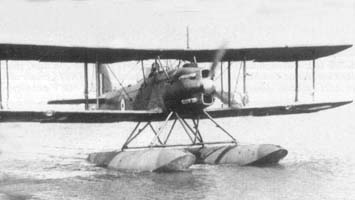| Seafox | |
|---|---|

| |
| Role | ship-borne reconnaissance seaplane |
| National origin | United Kingdom |
| Manufacturer | Fairey Aviation |
| First flight | 27 May 1936 |
| Introduction | 23 April 1937 |
| Retired | 1943 |
| Primary user | Royal Navy (Fleet Air Arm) |
| Number built | 66 |
The Fairey Seafox was a 1930s British reconnaissance floatplane designed and built by Fairey for the Fleet Air Arm. It was designed to be catapulted from the deck of a light cruiser and served in the Second World War. Sixty-six were built, with two finished without floats and used as landplanes.
YouTube Encyclopedic
-
1/2Views:9071 298
-
Inbox Review Of Frog 1/72 Scale Supermarine Spitfire MK 14 with the V1
-
Inbox Review Of The Matchbox 1:72 Spitfire MK. XVI / IX
Transcription
Design and development
The Fairey Seafox was built to satisfy Air Ministry Specification S.11/32 for a two-seat spotter-reconnaissance floatplane. The first of two prototypes appeared in 1936, first flying on 27 May 1936,[1] and the first of the 64 production aircraft were delivered in 1937.[2] The flights were organised as 700 Naval Air Squadron of the Fleet Air Arm.
The fuselage was of all-metal monocoque construction, the wings being covered with metal on the leading edge, otherwise fabric. It was powered by a 16-cylinder 395 hp (295 kW) air-cooled Napier Rapier H engine. It cruised at 106 mph (171 km/h), and had a range of 440 mi (710 km). The Seafox handled well but it was criticised for being underpowered, engine cooling was poor and landing speeds were higher than desired.
Operational history
In 1939, a Seafox played a part in the Battle of the River Plate against the German pocket battleship Admiral Graf Spee, by spotting for the naval gunners. Seafoxes operated during the early part of the war from the cruisers HMS Emerald, Neptune, Orion, Ajax, Arethusa and Penelope and the armed merchant cruisers HMS Pretoria Castle, Asturias and Alcantara. They remained in service until 1943.
Operators
Specification
Data from Fairey Aircraft since 1915 [4]
General characteristics
- Crew: 2
- Length: 33 ft 5 in (10.19 m)
- Wingspan: 40 ft (12 m)
- Height: 12 ft 2 in (3.71 m)
- Wing area: 434 sq ft (40.3 m2)
- Empty weight: 3,805 lb (1,726 kg)
- Gross weight: 5,420 lb (2,458 kg)
- Fuel capacity: 96 imp gal (115 US gal; 440 L)
- Powerplant: 1 × Napier Rapier VI H-16 air-cooled piston engine, 395 hp (295 kW)
- Propellers: 3-bladed propeller
Performance
- Maximum speed: 124 mph (200 km/h, 108 kn) at 5,860 ft (1,786 m) (rated altitude)
- Cruise speed: 106 mph (171 km/h, 92 kn) * Alighting speed: 58 mph (50 kn; 93 km/h)
- Range: 440 mi (710 km, 380 nmi)
- Endurance: 4 hours 15 minutes
- Service ceiling: 9,700 ft (3,000 m)
- Time to altitude: 5,000 ft (1,500 m) 15 minutes 30 seconds
Armament
- Guns: 1 × 0.303 in (7.7 mm) machine gun
- Bombs: under-wing racks for 2 × 100 lb (45 kg) bombs and 8 × 20 lb (9.1 kg) bombs
See also
Aircraft of comparable role, configuration, and era
Related lists
- List of aircraft of World War II
- List of aircraft of the Fleet Air Arm
- List of flying boats and floatplanes
References
Notes
Bibliography
- "For Light Reconnaissance" (PDF). Flight, 9 December 1937. pp. 570–574.
- Mondey, David. The Hamlyn Concise Guide to British Aircraft of World War II. London; New York: Aerospace Publishing Ltd., 1982. P.87. ISBN 0-600-34951-9, ISBN 0-600-34967-5.
- Sturtivant, Ray and Balance, Theo. The Squadrons of the Fleet Air Arm. Tonbridge, Kent, UK: Air Britain (Historians) Ltd., 1994. ISBN 085130-223-8.
- Taylor, H.A. Fairey Aircraft since 1915. London: Putnam, 1974. ISBN 0-370-00065-X.
External links
- Fairey Seafox – British Aircraft of World War II